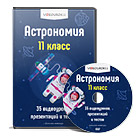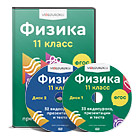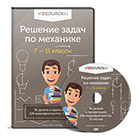Lesson 1.2 The motion of a mass on a spring.
Learning objectives.
By the end of this lesson, students will be able to:
Skills: understanding, applying, analyzing.
Concept. Two examples of simple harmonic motion are the oscillations of a pendulum and the oscillation of a mass on a spring.
Consider a block of mass m attached to a spring. When we do not pull the spring, it is in its equilibrium position. In this state the force of gravity is balanced by the initial tension of the spring.
Now, let’s perform two actions and observe what happens:
when we pull the block outwards, there is a force acting on the block tries to pull it inwards, that is, towards its equilibrium position.
When we push the block inwards, there is a force acting on the block that tries to push it outwards, that is, towards its equilibrium position.
In both the cases, we can see that there is a force acting on the block that tries to return the block to its equilibrium position. This force is the restoring force.
For SHM, the oscillation frequency depends on the restoring force. For a mass on a spring,, where the restoring force is F = - kx , this gives: F = - kx =-kAcosωt.
This is the net force acting, so it equals ma: F= ma = m( -Aω2cosωt) or
-kAcosωt = -m Aω2cosωt or ω2 = k/m.
Thus, the mass on the spring will perform undamped harmonic oscillations with the circular frequency: ω = √k/m.
The period of oscillation of the load is directly proportional to the square root of the magnitude of the load and inversly proportional to the spring constant:

Now, let’s have a some problems.
Problem 1. A block of mass 5.0 kg is attached to a spring with spring constant of 100 N/m. What is the period of its oscillation?
Problem 2. A block of mass 0.5 kg is attached to a spring with spring constant of 800 N/m. With what frequency will the block oscillate?
Problem 3. Autumn, a young 20 kg girl is playing on a trampoline. The trampoline sinks down 9 cm when she stands in the middle. What is the spring constant? If the trampoline then begins to bounce, what would the frequency of the bounces be?
Problem 4. A block of mass 3.5 kg is attached to a spring with spring constant of 250 N/m. With what frequency will the block oscillate?
Problem 5. A block of mass 3.0 kg is attached to a spring with spring constant of 300 N/m. What is the period of its oscillation.
Lesson 1.3. LC circuit.
Learning objectives.
By the end of this lesson, students will be able to:
Sketch an LC oscillator and explain which quantities oscillate and what constitutes one period of the oscillation;
Explain the analogy between a block- spring oscillator and an LC oscillator;
Solve LC circuit problems.
Skills: understanding, applying.
Concept. An LC circuit is an electric circuit consisting of an inductor, represented by the letter L, and a capacitor, represented by the letter C, connected together. LC circuit are key components in many electronic devices, particularly radio equipment, used in circuits such as oscillators, filters, tuners and frequency mixer.
An LC circuit is shown in figure. If the capacitor contains a charge a before the switch is closed, then all the energy of the circuit is initially stored in the electric field of the capacitor ( figure a). This energy is:
Ee = CUm2/2 or Ee = qm2 / 2C.
When the switch is closed, the capacitor begins to discharge, producing a current in the circuit. The current, in turn, creates a magnetic field in the indicator. The net effect of this process is a transfer of energy from capacitor, with its diminishing electric field, to the inductor, with its increasing magnetic field.
In figure ( b ), the capacitor is completely discharged and all the energy is stored in the magnetic field of the inductor. At this instant the current is at its maximum value Im: Em = LIm2 /2.
Since there is no resistance in the circuit, no energy is lost through Joule heating; thus the maximum energy stored in the capacitor is equal to the maximum energy stored at a later time in the inductor:
Ee = Em or qm2/ 2c = LIm2/2
At an arbitrary time when the capacitor charge is q(t) and the current is I (t), the total energy in the circuit is given by:
Etotal = q2/2c + LI2/2
When fully charged, the capacitor once again transfers its energy to the inductor until it is again completely discharged as shown in figure (d). Then, in the last part of this cyclic process, energy flows back to the capacitor, and the initial state of the circuit is restored.
Therefore in the absence of resistance, the total energy in transformed back and forth between the electric energy in the capacitor and the magnetic energy in the inductor. This phenomenon is called electromagnetic oscillation.
Its electromagnetic oscillations are analogous to the mechanical oscillations of a mass at the end of a spring. In thus case, energy is transferred back and forth between the mass which has kinetic energy mv2/2 and potential energy kx2/2.
Now, let’s have a some problems.
Problem 1. In an oscillating LC circuit, L = 1.10mH and C = 4.00µF. The maximum charge on the capacitor is 3.00µC. Find the maximum current.
Problem 2. An oscillating LC circuit consists of a 10mH inductor and a 400pF capacitor. Find the amplitude of the current if the voltage amplitude is 500 V.
Problem 3. An oscillating LC circuit consists of a 75.0mH inductor and a 3.60µF capacitor. If the maximum charge on the capacitor is 2.90µC , what is the total energy in the circuit and what is the maximum current?
























